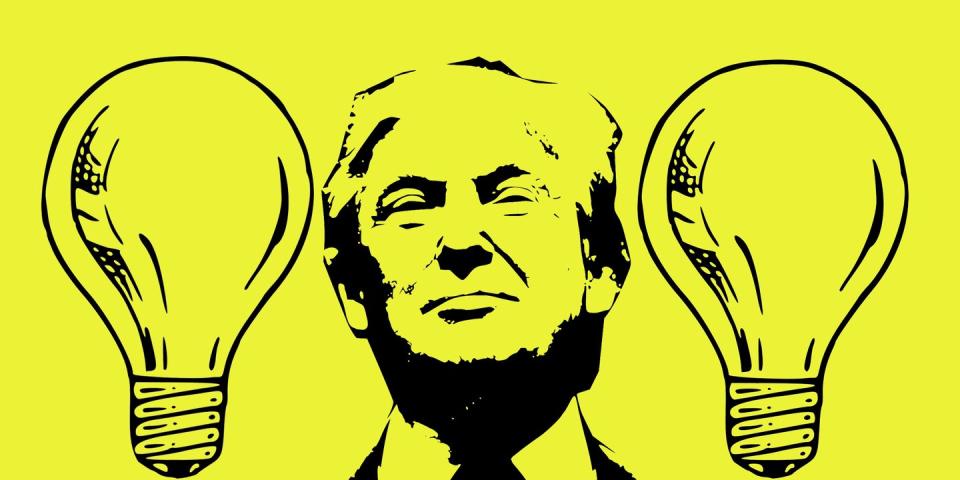Trump Administration Rolls Back LED Light Bulb Standards
The Department of Energy has refused to enforce suggested light bulb efficiency standards.
Incandescent bulbs are the hottest, shortest-lived, and least energy-efficient bulbs.
U.S. households will likely continue to use energy-efficient bulbs anyway.
President Trump’s Department of Energy (DOE) has decided not to enforce raised standards for traditional incandescent light bulbs. Light bulbs may not seem like the largest issue in the world, but they’re a canary in the coal mine of energy policy; switching to LED bulbs is an extremely simple, accessible, money-saving change that almost everyone can make easily.
By choosing to go against recommendations to introduce limits on incandescent bulbs, Trump’s administration is continuing to take a stand against energy-saving innovations in general—even the ones that benefit consumers in a hands-on way.
“DOE’s analysis determined that more stringent standards for GSILs [general service incandescent lamps] would have increased the price of those light bulbs by 300 percent. This increase is not economically justified because the bulbs do not last long enough for the energy savings to surpass the higher upfront price,” the department says. In other words, an incandescent bulb held to recommended standards would cost so much that it wouldn’t be worth paying for.

There may be people who only have access to incandescent bulbs. For everyone else, CFL or LED bulbs represent a wild savings in energy and in operating cost over time, according to the DOE. In fact, the original energy-saving lightbulb advice—to switch the lights off when you leave the room—is contraindicated for incandescent bulbs and shortens their life. There are incandescent bulbs that have lasted for 100 years, but that longevity doesn’t come with efficiency or even brightness. Most of the longest-lasting bulbs have unconventional filaments that avoid the telltale tink! of a breaking tungsten filament.
The DOE’s focus on financial feasibility is interesting, because consumers have chosen to adopt LED bulbs over time despite a very high cost at the beginning. Without these early adopters, momentum would likely have been much slower. Now, cities are racing to ban plastic straws—a tiny gesture that mostly hurts disabled people who need to use straws—but struggling to hold up larger energy-saving policies. The reason an up-front regulation works with lightbulbs is that a higher cost would discourage consumers. Even the nosiest local governments can’t roam the streets to peek into windows and identify illicit incandescent bulbs.
Over time, use of incandescent bulbs continues to fall even without costly new standards. In a feature earlier this year, the New York Times reported that just 6 percent of lightbulbs in home use in 2016 in the U.S. were incandescent bulbs, down from 68 percent in 2010. That feature corresponded with a previous Trump rollback of an Obama administration policy that sought to include all lightbulb shapes, not just classic round or “pear-shaped” bulbs. It was President George W. Bush who signed the first national lightbulb standard in 2007, and the DOE has rolled back the second phase of this policy.
You Might Also Like

